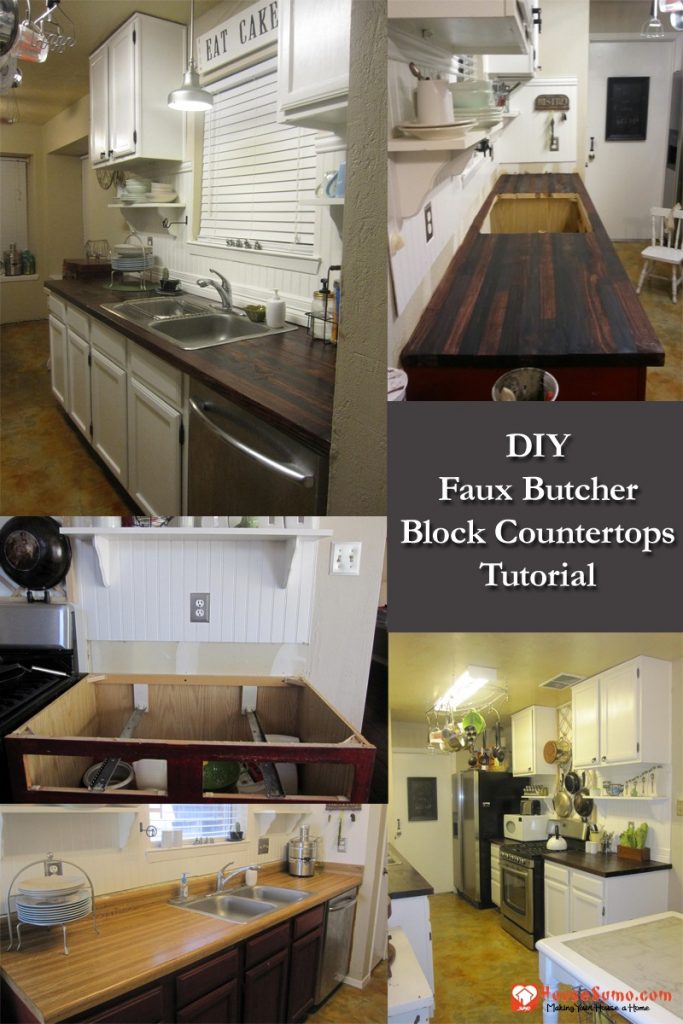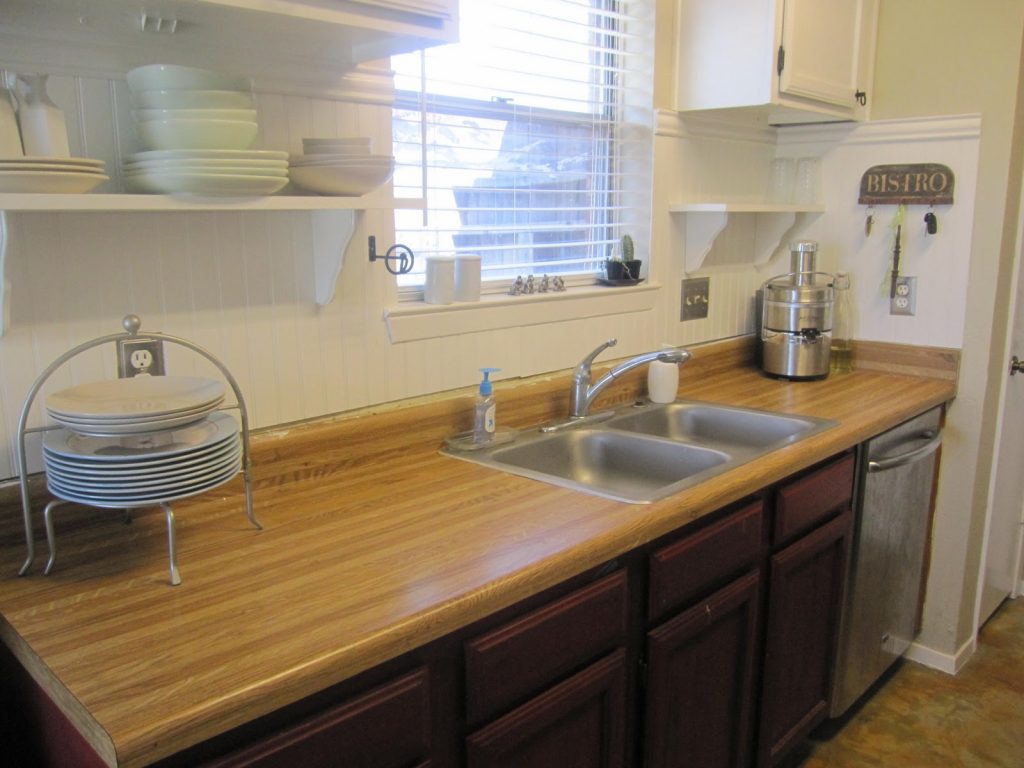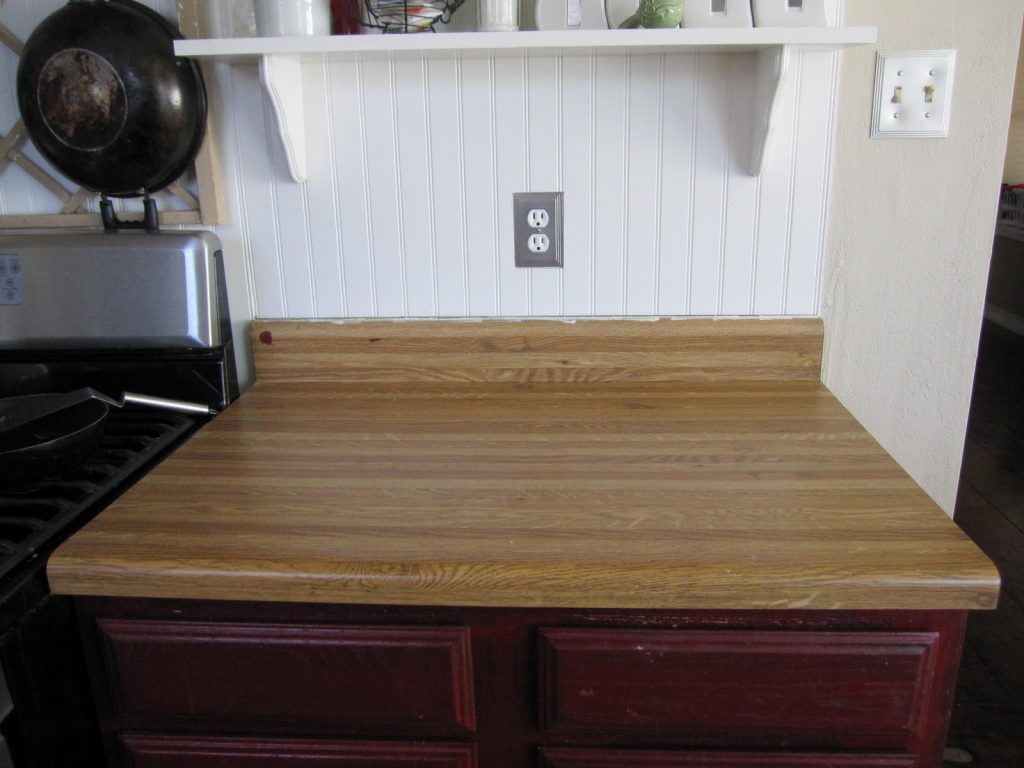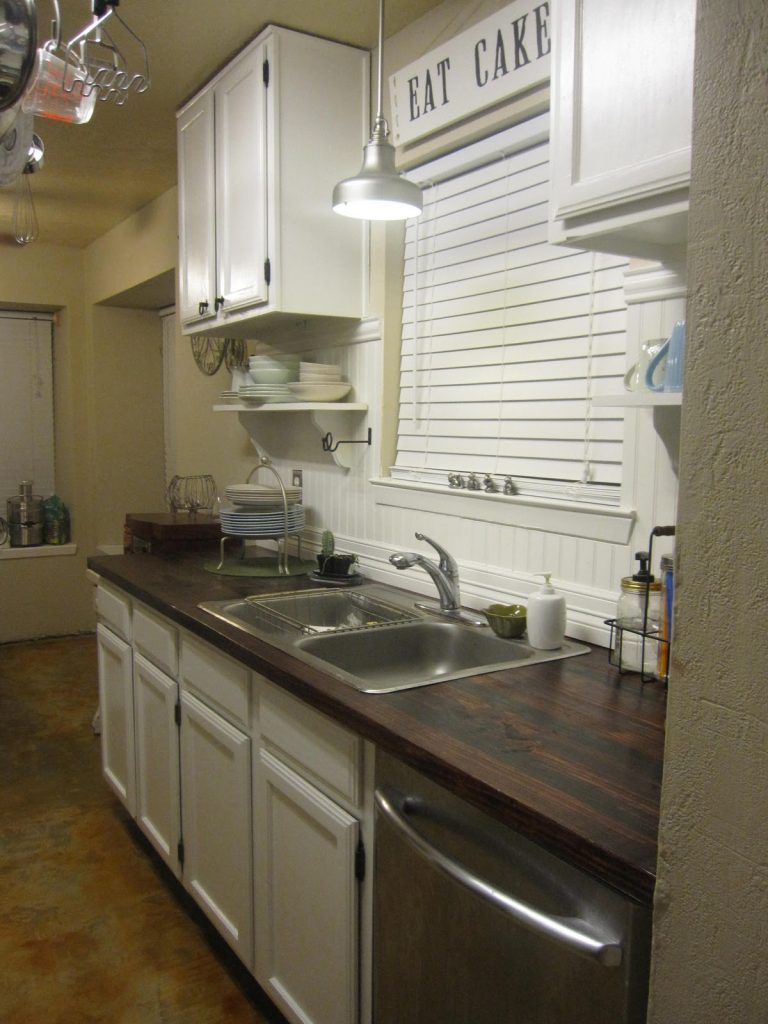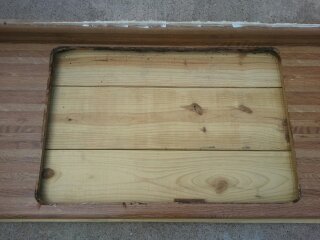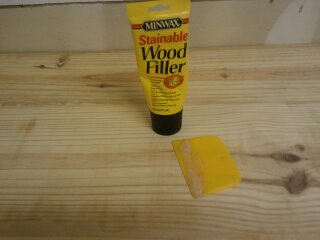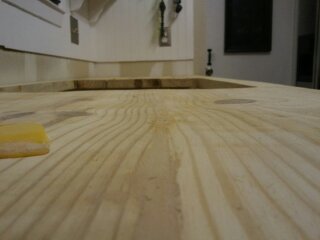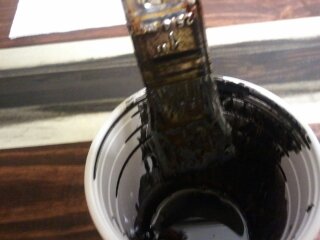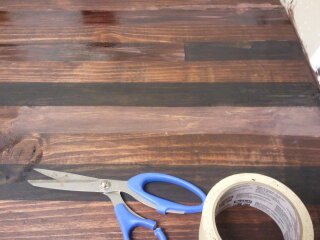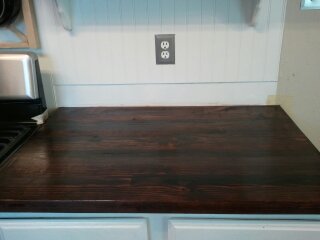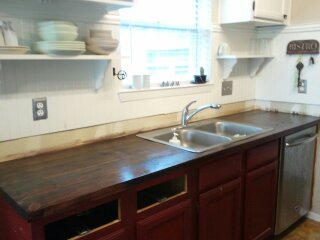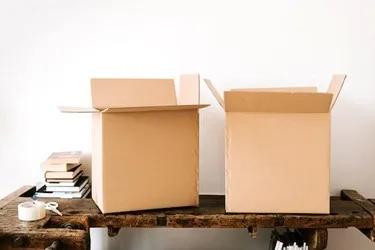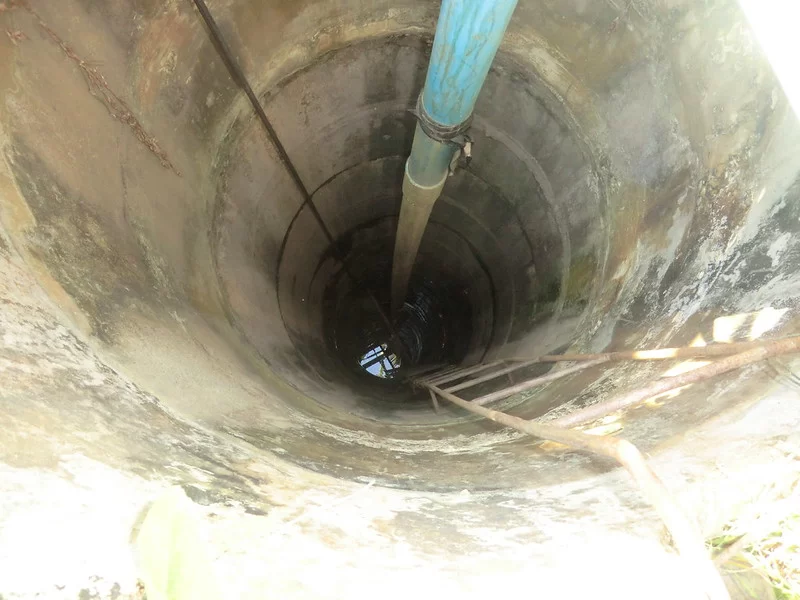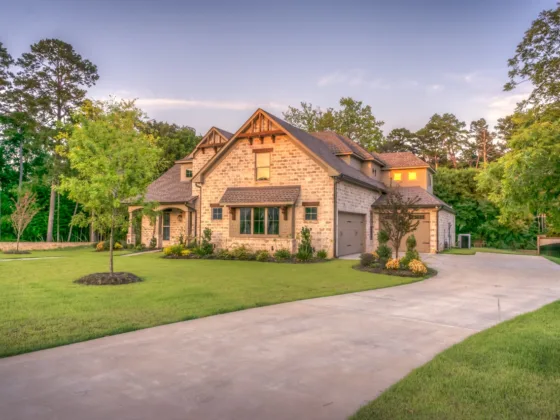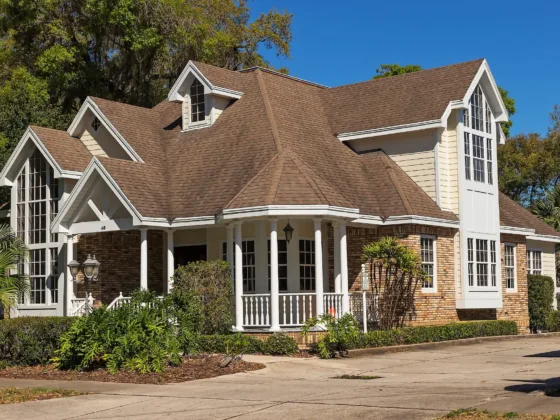For those of you wondering how to build a butcher block countertop, I have the answer! In this tutorial, I will share with you exactly how I made my own faux butcher block countertops, including any mistakes and challenges I encountered along the way.
DIY Faux Butcher Block Countertops
First, let me clarify that while the end result does resemble the butcher block, it’s not an exact match. If you’re looking for countertops that truly mimic real butcher blocks, your best bet is to either purchase authentic butcher blocks or explore options available at IKEA. They have a great tutorial on how to use their countertops to create a butcher block look.
That being said, my faux butcher block counters came pretty close in appearance and only cost me $56 for the entire project. I completed this project entirely on my own over a single weekend, so ladies, don’t be intimidated! It’s definitely doable if you have some basic DIY skills.
Also Read:
Before and After Pictures
But before we dive into the step-by-step process, here are some satisfying before and after pictures:
How to Build Faux Butcher Block Countertops
Step 1: Remove Old Countertops
I started by removing the old countertops using a hammer. If you have drawers underneath your counter, make sure to check for any screws in the corners before attempting removal. Additionally, don’t forget to disconnect and remove the kitchen sink.
Note: Apologies for not providing pictures of this step. It turned out to be surprisingly easy for me, even though I was initially hesitant about dealing with plumbing.
Step 2: Choose Your Wood
Next, decide on the type of wood you want to use for your countertops. Since I wanted mine to be thick and sturdy, I opted for two pieces of 2″ by 10″ wood planks and one piece of 2″ by 8″ for each counter. To save time and effort, I had the friendly staff at my local Home Depot cut the planks to the desired lengths. Alternatively, you can use heavy-duty plywood instead of solid wood.
Pro Tip: For the counter where the sink will go, make sure to arrange your wood planks in the desired order but upside down in your workspace. This will help when marking the cuts later.
Step 3: Prepare the Wood Planks
Before assembling the countertops, there are a few things you should do with the wood planks:
- Seal the Bottom:Since this side will be facing the sink, it’s important to protect it from moisture. I recommend applying a couple of coats of wood sealer to seal the bottom surface.
- Mark and Cut for Sink:Flip the planks right side up and place the old counter on top. Trace out exactly where the kitchen sink goes using a pencil or marker. Then, using a jigsaw, carefully make the necessary cuts following your markings. This was the only cutting I did myself for this project.
Fun Fact: This step also revealed some nasty black mold under my old sink. Yuckers!
Step 4: Attach Wood Planks to Cabinets
Now it’s time to attach the prepared wood planks to your cabinets:
- Test Fit Sink:Before gluing anything down, double-check that the sinkhole is cut properly by temporarily reinstalling the sink and ensuring that all plumbing connections align correctly.
- Apply Adhesive:Using construction-grade adhesive, apply a generous amount onto the cabinet surface where your first plank will sit.
- Start from Back:Begin with the back plank of one counter section and press it firmly onto the adhesive. Then, continue working your way forward, adding each plank and gluing them together along the seams.
- Weigh It Down:To ensure a strong bond, place some heavy objects (e.g., bags of cement, or anything you have lying around) on top of the wood while the adhesive dries. Typically, it takes around 15 minutes for the glue to set.
Pro Tip: I recommend working on one counter section at a time rather than trying to do everything simultaneously.
Before I glued the planks down to the cabinets I wanted to make sure that the sinkhole was cut properly so I replaced the sink and made sure that the plumbing matched up right.
I used construction-grade adhesive to glue the planks down to the cabinets. When we do decide to get brand new counters I can remove the countertops with a heat gun so no biggy.
I worked on only one counter section at a time and started with the back plank and worked my forward and also glued each plank together. I weighed the wood down with some bags of cement that I already had. Just use anything heavy. The glue dries in about 15 minutes.
Step 5: Fill and Sand Wood Seams
To achieve a smoother and more seamless look, follow these steps:
- Fill in Gaps:Using wood filler, fill in any visible gaps between the planks. Apply enough filler to completely fill the seams and let it dry according to the product instructions.
- Sand It Smooth:After waiting for about 2 hours for the filler to dry, grab your electric belt sander (or sandpaper if you prefer hand sanding) and start sanding down the wood surface. Focus on smoothing out any unevenness and blending the filled areas with the surrounding wood.
Pro Tip: If you have a sander with a vacuum attachment, use it to minimize dust and keep your workspace cleaner.
I wanted to hide the wood seams as best as I could so I filled them in with wood filler and let them completely dry.
I waited for 2 hours and then started to sand down the wood and smooth out the wood filler. I used my electric belt sander for this project but still had to hand sand in some areas.
I love this sander because I can attach my vacuum to it to cut down on some of the dust and mess. I used tons of sandpaper and several different grits.
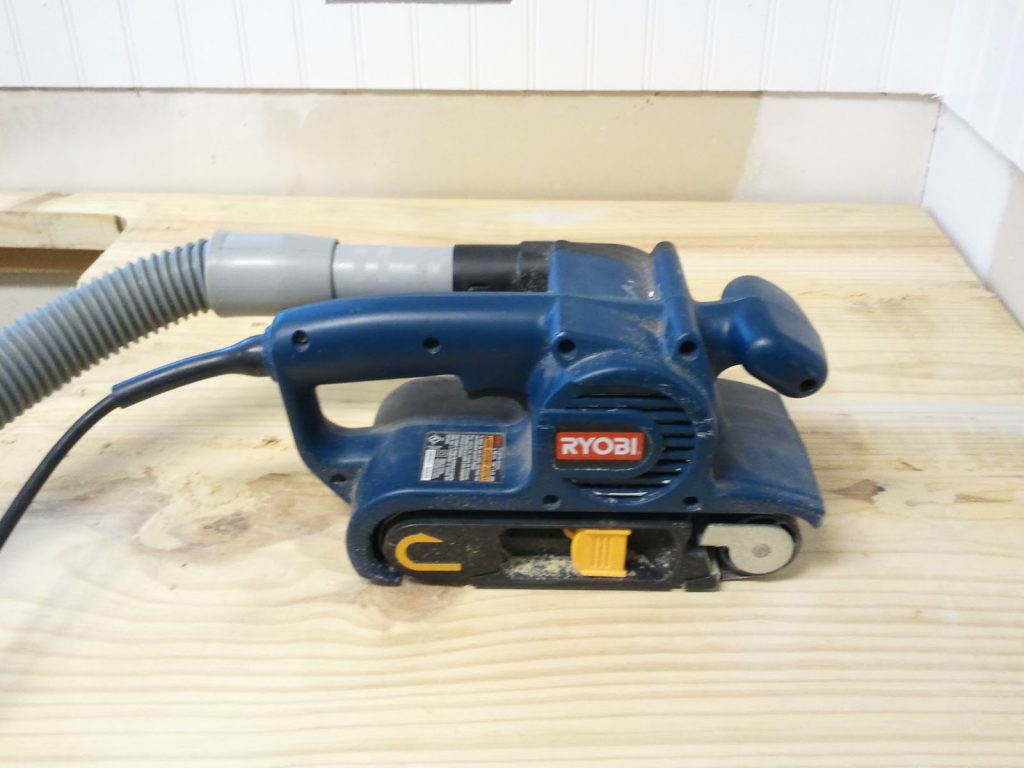
Step 6: Stain the Countertops
Now comes the fun part – adding color and depth to your faux butcher block countertops!
- Prepare Stain:Begin by cleaning up all the sanding dust from the previous step. Then, choose a stain color that appeals to you. In my case, I decided to use up some red mahogany stain that I already had on hand.
- Apply Base Coat:Using a paintbrush or foam brush, apply an even coat of stain to the entire surface of your countertops. Work in small sections at a time, allowing the stain to penetrate the wood for a few minutes before wiping off any excess with a clean rag or cloth.
- Create Custom Stains:To achieve a more interesting look, I decided to mix two additional shades of stain. For one, I used black walnut stain and added a little black paint to thicken it up. The second shade was created by combining red mahogany stain with tan craft paint until it reached a gel-like consistency.
- Use Tape for Detailing:To control where each stain color goes, I employed the use of painter’s tape. I carefully taped off sections on the wood surface that I wanted to darken or lighten using my custom stain mixtures.
- Apply Stain Gels:With a brush or sponge applicator, generously apply the stained gel mixture onto the taped areas. Let it sit for about a minute to allow the color to develop, then wipe off the excess with a clean cloth.
- Finishing Touches:If you find that certain areas appear too light after removing the tape, you can lightly brush or dab some more of your base coat stain (in my case, red mahogany) over those spots to darken them slightly.
Fun Fact: During this process, I discovered that letting sealer drip down the sides of the planks can create interesting effects in the corners where the stain doesn’t fully penetrate.
See in the corners where the stain wouldn’t stain the wood. That’s where I let the sealer drip.
I used the tape to measure the strips that I was taping up.
Step 7: Seal the Surface
To protect your newly stained countertops and give them a beautiful sheen, follow these steps:
- Choose a Sealer:Opt for a clear polyurethane sealant suitable for use on wood surfaces. Make sure it’s compatible with stains and finishes.
- Apply Multiple Coats: Using either a brush or foam applicator, begin applying thin coats of polyurethane onto the entire surface of your countertops. Allow each coat to dry according to the manufacturer’s instructions before applying the next one. I didn’t keep track of how many coats I did; I simply continued until I achieved the desired level of shine.
Pro Tip: Be patient during this step, as applying too thick a coat or rushing the drying process can result in uneven surfaces or sticky finishes.
Step 8: Add Trim (Optional)
If you want to give your countertops a more finished look, you can consider adding trim along the edges. This step is entirely optional but can enhance the overall appearance of your faux butcher block countertops.
Note: The cost of the trim will vary depending on the type and style you choose.
I spent $56 on wood, poly, and glue.
The trim cost $18.
And there you have it – your very own DIY faux butcher block countertops! I hope this tutorial has been helpful for those who reached out to me seeking more information on how to create this look.
External Links
- How to Build Your Own Countertops
- Removing Countertops, How to Tear Out Old Countertops
- DIY Ardex Concrete Counters via Young House Love
- DIY Chalkboard Countertops via March Orchard
- Kitchen Makeover: Our New Counters via All Things New
- How-To: Faux Reclaimed Wood Counter Tops via The Ragged Wren
- How to build a Butcher Block Counter via Reality Daydream
FAQs(Frequently Asked Questions)
Faux butcher block countertops are a budget-friendly alternative to traditional butcher block countertops. They are designed to resemble the look of real wood butcher block but are typically made from other materials such as laminate or wood veneer.
You can start by removing the old countertops using a hammer. If any screws or nails are holding the countertops in place, make sure to remove those as well. Be careful when removing the old countertops to avoid damaging the cabinets underneath.
The type of wood you choose will depend on your personal preference and budget. Some popular options for faux butcher block countertops include oak, maple, and cherry wood. Make sure to select a wood that is durable and suitable for use in a kitchen environment.
Before assembling the countertops, you’ll need to prepare the wood planks by sanding them down and ensuring they are smooth and free of any imperfections. You may also want to apply a coat of sealant to protect the wood from moisture and stains.
Staining the countertops is a fun way to add color and depth to your faux butcher block. Choose a stain that complements your kitchen decor and apply it evenly to the surface of the wood. Allow the stain to dry completely before moving on to the next step.
Adding trim is optional, but it can give your countertops a more finished look. You can choose from a variety of trim options, such as bullnose or beveled edge trim, to enhance the appearance of your faux butcher block countertops.

